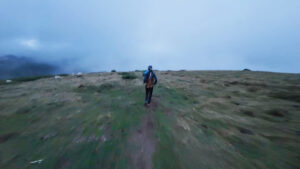In 2018, four-time world champion stand-up paddleboarder Casper Steinfath crossed one of the toughest straits in the world. His achievement was a perfect union of persistence, athleticism, and meticulous planning. But what motivates athletes like Steinfath to take on such risky challenges?
The 120km Skagerrak is a notoriously treacherous strait between Denmark and Norway. Aside from the bone-chilling temperatures, Skagerrak’s swirling tidal currents (which come from the English Channel) make it particularly hazardous. More so for someone balancing on a three-metre plank of fibreglass.
Steinfath’s crossing faced two possible outcomes. Success or failure. Failure could be fatal.
Crossing Skagerrak without a compass or GPS is risky. But that’s how Steinfath attempted his first crossing. All he brought in case of emergency was a flare. A flare, his mother questioned, would have little value if he was floating around in unpredictable currents.
First attempt
He aborted that first attempt in 2017 just 12km from Norway. Steinfath had paddled for 16 hours 23min and completed more than 50,000 strokes. By then, his body was in a state of extreme cold. The tides prevented his support boat from traveling within a safe distance to him. Yet he desperately wanted to complete his mission.

Skagerrak Strait runs between Denmark and Norway. Photo: TotalSUP
The next year, he researched meticulously. Forming a more robust plan, he consulted locals, strategized with his coach, and improved his rescue resources.
In the film, the expression on his face hints at someone who’s bogged down by the prospect of a second unsuccessful mission. He’s clearly not accepting of that idea. Here is a person who wants to succeed more than anything. He’s prepared to risk his life for it.
In the 28 days leading up to his second Skagerrak attempt, Steinfath rises at 3 am for training. That’s the best way to acclimatize his body for the challenge, which he decides will have greater chance of success with an earlier departure.
Second attempt
In March 2018, he puts his willpower, planning, and ability to the test.
Setting off at 1 am from Kjul Beach, he paddles from Denmark to Norway. The journey takes him 18 hours 26 minutes. He is the first person in the world to SUP the route.
Is he satisfied? Yes, his smile says so. Even though SUP has been around for decades, it’s only become a competitive sport on the world arena in the recent years. More than just a lazy beach holiday activity, it is a mechanism for pushing physical limits. Just like BASE jumping or free diving.
Steinfath can’t pinpoint what motivated him to take on such an audacious and risky challenge. He wonders if he’s just stubborn beyond belief. His friend decides, “There [was] high school. There [was] business school. Now we live in a time where you suddenly have your own ideas. Your own rules.”
He’s not wrong. Athletes like Steinfath are rewriting the rule book on what path to take in life. Within that, risk is quantified differently than before. New boundaries are being created for what motivates.
Steinfath puts it achingly simply. “I love to be in a situation where there is challenge.”






